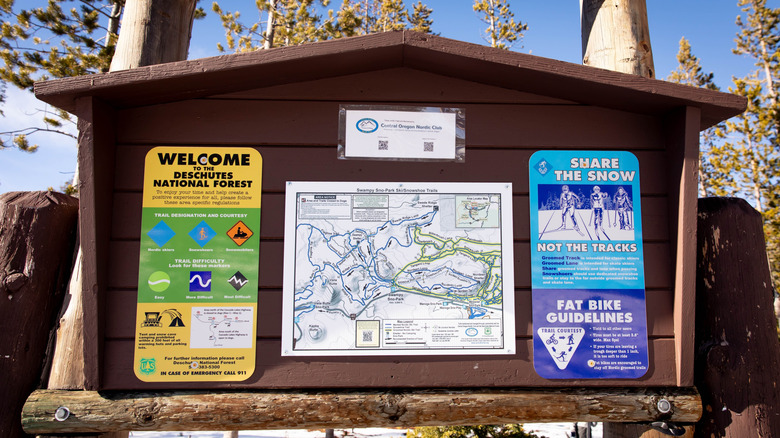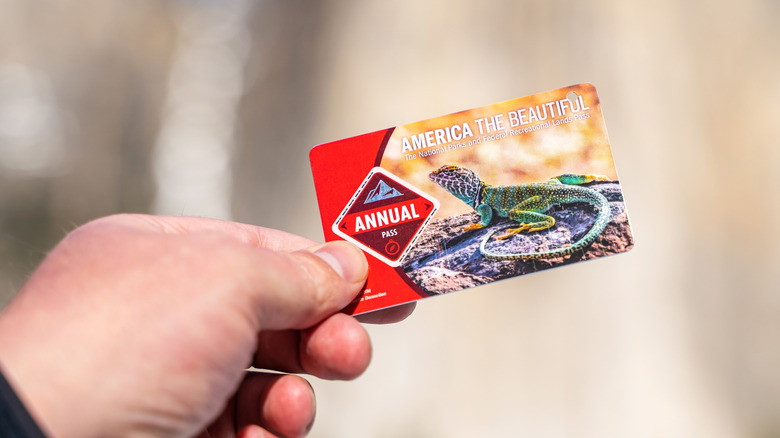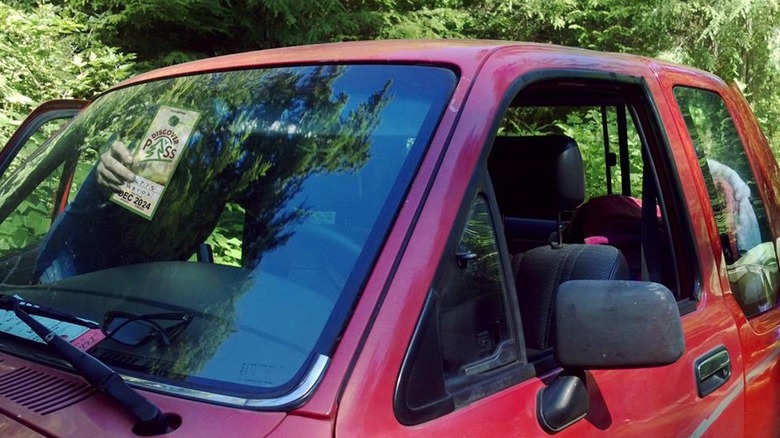Which Forest Passes Do You Need To Display While In Oregon And Washington? Here's What To Know
The Pacific Northwest is home to some of the nation's most enthralling outdoor destinations, especially in the states of Washington and Oregon, which boast an enviable array of natural gems. From this beach that is home to the most iconic sea stacks in America to a breathtaking lake hidden in the Deschutes National Forest, the sister states that sit in the upper left corner of the contiguous U.S. deliver deeply when it comes to raw natural scenery.
This of course means that the mountains, forests, beaches, and high deserts of Oregon and Washington see plenty of visitors, who are charged access fees to fund the agencies that look after these massive swaths of land. While it's possible to pay for day permits in many parks, forests, and other reserves, if you plan on getting out there more than a couple of times a year, an annual pass is your best bet.
But where to start? Washington and Oregon have their own rules governing annual access to lands they own, while national parks and other federal sites require separate passes and permits. Sorting out just what pass you need to take a simple hike can be frustrating and confusing, so it pays to do your homework before you head out, as the penalties for getting it wrong could cost you.
Here's what you need to know about federal lands
The first thing that determines what kind of pass you'll need is whether the land is owned and managed by the state or the federal government. For federal lands, the America the Beautiful Pass is your go-to permit. This interagency pass gets you into pretty much any public park, forest, or site managed by the federal government. It costs $80 a year, and in Washington and Oregon, it will allow you access to the Olympic, Crater Lake, and Mt. Rainier National Parks, along with all national forest lands and a slew of national monuments and historic sites.
There is, however, one exception. While the America the Beautiful Pass gets you into Mt. Rainier National Park, they've also implemented a timed-entry reservation system to control traffic and crowds. This must be done online ahead of time at Recreation.gov and costs $2, even if you've already purchased the federal interagency pass. Also, some areas don't require any kind of pass at all. These include the Olympic National Park's coastal stretch (though other fees may apply on tribal land), and the North Cascades National Park — the site of this thrilling hike that will make you think you're in Switzerland.
If you don't want to purchase an annual pass, you can always opt for a day-use permit. They're available online (don't expect to be able to buy them at the trailhead) for $5 for national forests, while day passes for the Olympic, Mt. Rainier, and Crater Lake National Parks will set you back $30 for one vehicle, though they're actually good for a week. The latter can be purchased at the park gate, though keep in mind that most sites no longer accept cash.
The inside scoop on state passes
Things get a bit more complicated at the state level, so it's best to look at each place separately. In Washington, the Discover Pass is your passport for all state parks, Department of Natural Resources, and Department of Fish and Wildlife Lands. Whether you're camping, hiking, fishing, birding, hunting or more, $30 a year has you covered for all public state holdings. Just make sure to display it prominently on the inside of your vehicle, like all passes.
The Oregon equivalent is the State Park Parking Permit, which is $30 for 12 months or $50 for 24. This allows you to park at any one of 25 state parks that charge a day-use parking fee, though you can also just pay $10 daily by using the small yellow machines at park entrances. Land operated by the Oregon Department of Fish and Wildlife requires a separate permit, which is also $30 annually, or $10 a day.
However, when it comes to national forest land, Washington and Oregon have combined forces and come up with the Northwest Forest Pass. This allows you to park in USDA forest service lands in both states and costs $30 a year, making it a cheaper alternative to the America the Beautiful Pass for those aiming to spend most of their time in national forests rather than national parks. Whatever the case, paying for access can be a headache and sometimes involves a lot of luck, like scoring a permit to hike Washington's most enchanting trails.


